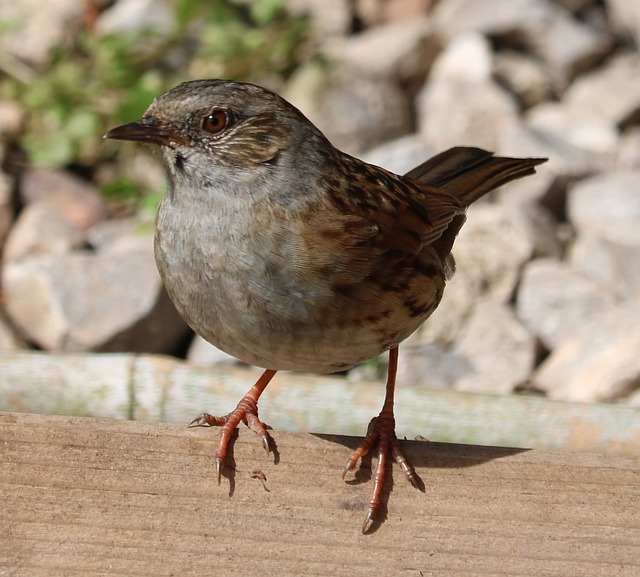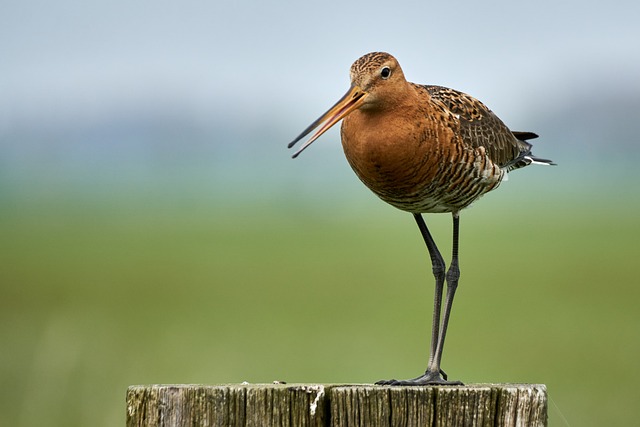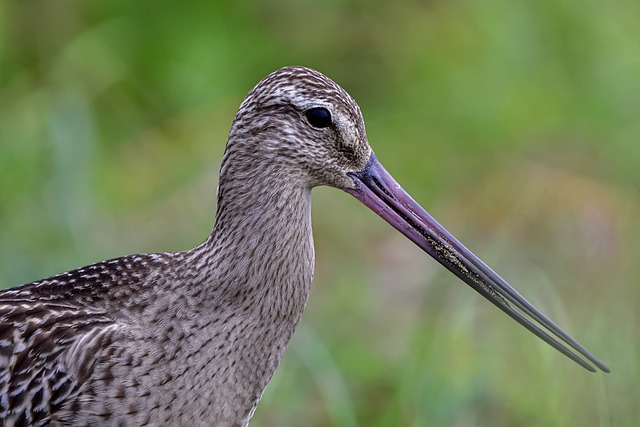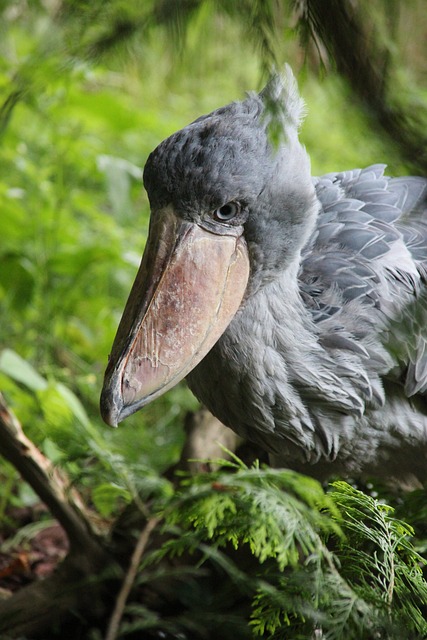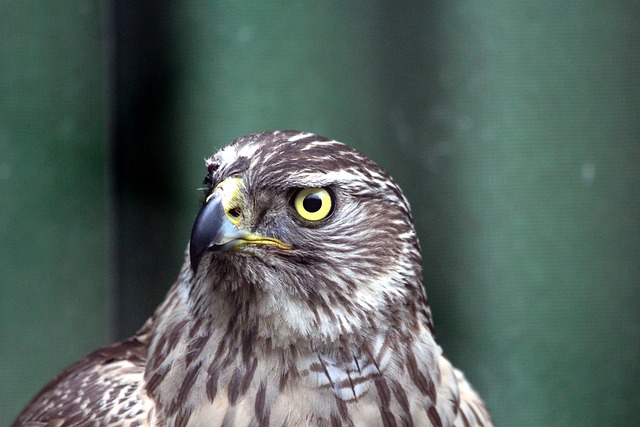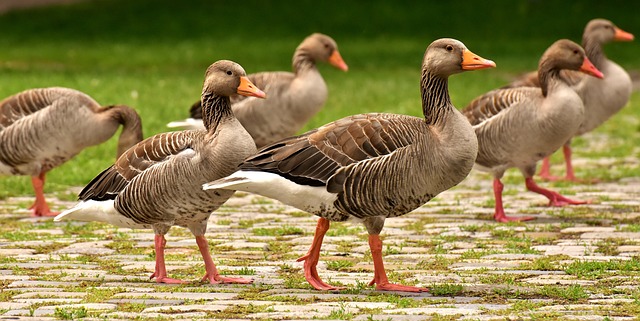The Eurasian collared dove, or Streptopelia decaocto, is a species of dove which is most commonly found living throughout Europe and Asia. In recent years, the species has also begun to spread into North America.
Found in a variety of habitats, this dove is mostly recognized by the distinctive collar-shaped black patch on the back of the neck. It is a medium-sized species with a slender body, broad wings, and a short tail.
Introduction
Eurasian collared doves are found in a wide range of habitats throughout their native range, including woodlands, towns, and semi-open areas. They are most commonly found in areas with large trees, which offer them the opportunity to rest in between flights. Their preferred habitats are often quite close to human activities, including roads, agricultural land, and residential areas. In North America, their range is limited to the coastal parts of the United States and Canada.
Identifying Eurasian collared doves from other dove species is relatively straightforward. The most distinguishing feature of the Eurasian collared dove is the black collar-like patch on the back of the neck. The patch is slightly curved, with the back of the neck being the highest point, and the neck feathers around the patch being darker in color than the rest of the neck. The body feathers are a bluish-gray color, and the wings and tail are a darker shade of gray. The feet and legs are a pinkish-red color, and the eyes are a yellowish-brown.
When it comes to diet and feeding habits, Eurasian collared doves are omnivores, meaning they will consume both plant material and animal prey. Their typical diet consists of seeds, fruits, small insects, and other invertebrates. They are known to feed on the ground, as well as in trees and shrubs. They have even been seen feeding on human structures such as balconies, rooftops, and window ledges.
Another distinctive behavior of the Eurasian collared dove is its territorial nature. In order to protect their territories, they will often perform a series of aerial displays, such as flying in circles, chases, and dives. These displays are usually accompanied by loud calls, which can be heard from a distance. They are also known to be quite social, often forming large flocks when food availability is high.
Eurasian collared doves breed mainly between April and September, with the peak being in the summer months. The doves will usually build their nests in tree cavities or on ledges, or even in human structures such as balconies and window boxes. The female will lay two white eggs which will be incubated for about two weeks.
Despite their wide range, the Eurasian collared dove is listed as a species of Least Concern by the IUCN. However, they are still threatened by human activity, such as habitat destruction, hunting, and pollution. As such, conservation measures are being taken to ensure their population is not adversely impacted by human activities.
The Eurasian collared dove is a fascinating species, with a variety of interesting characteristics. From its distinctive collar-shaped black patch on the back of the neck to its territorial nature and aerial displays, this species has a lot to offer. Their diet is varied, and they are known to take advantage of human structures for their nesting and feeding habits. Finally, the Eurasian collared dove is an important species in terms of conservation, and it is essential that we take steps to ensure its population is not adversely impacted by human activities.
Habitat
The Eurasian Collared Dove is a widespread species that is found on nearly every continent and in a variety of habitats. These doves are most commonly found in open areas with low vegetation such as pastures, grasslands, fields, and parks. They will also inhabit arid regions that are not too extreme in temperature and can often be found in urban areas such as city parks.
Preferred Habitat: The Eurasian collared dove prefers open areas with low vegetation that provide plenty of food sources. These doves usually live in areas with an abundance of food sources such as seeds, grains, fruit, and insects. In addition, they prefer nesting spots close to water sources such as ponds and streams.
Nesting and Breeding: Eurasian collared doves build their nests in the forks of trees or on platforms made by humans. These doves are monogamous and typically form lifelong pair bonds. The female collared dove will lay up to six eggs at a time which are incubated for approximately two weeks. During this time, both the male and female dove will take turns caring for the eggs.
Interaction with Humans: Eurasian collared doves are often found in urban areas and can be seen foraging for food in city parks. They are tolerant of human presence and often approach people for food. Due to this proximity to humans, these doves are susceptible to conflicts with humans, as they may nest on balconies or other human structures.
The Eurasian collared dove is a widespread species that can be found in a variety of habitats. These doves prefer open areas with low vegetation and plenty of food sources, and can often be seen in urban areas. They are tolerant of human presence and often approach people for food. The doves typically form lifelong pair bonds and build their nests in the forks of trees or on platforms made by humans. Care must be taken to reduce conflicts between humans and Eurasian collared doves.
Diet and Feeding Habits
The Eurasian Collared Dove is an omnivorous bird, and its diet includes a variety of seeds, fruits, nuts, plant matter, and insects. These birds typically feed on the ground, but they will also forage in low shrubs and trees. Their typical diet includes grasses, grains, weed seeds, berries, and wild fruits, as well as insects such as caterpillars, beetles, and spiders.
When it comes to feeding techniques, the Eurasian Collared Dove is known for its quick and efficient searching method. They will hop from one item to the next, picking up each item and then dropping it after a few seconds. This method allows them to quickly pick out the best items to feed on. In addition, they use their bill to quickly pluck seeds from the ground.
In addition to foraging for food on the ground, Eurasian Collared Doves also feed on human structures, such as bird feeders or window sills. When presented with these resources, the birds will quickly take advantage of them, especially during the winter months when food is scarce.
The Eurasian Collared Dove also has a unique feeding behavior known as “seed caching.” This behavior involves storing large amounts of food in various places, such as in branches or even underground. This behavior helps the dove survive when food is scarce, as it provides them with a backup food source.
The Eurasian Collared Dove typically feeds alone, but it has been known to join mixed flocks during the winter months. This behavior has the benefit of allowing the bird to capitalize on other birds’ food sources.
Overall, the Eurasian Collared Dove is an opportunistic feeder that will take advantage of a variety of food sources. They are highly efficient foragers, and their seed caching behavior ensures that they are able to survive during the winter months.
Behavior
Eurasian collared doves are relatively social creatures, displaying a variety of behaviors when interacting with humans and other doves. Understanding their behavior can help with their conservation and protection.
The territorial nature of Eurasian collared doves can be observed through their characteristic behavior of chasing away intruders. While they are relatively tolerant of other birds, they become agitated when faced with the presence of a predator or a potential mate. This behavior is further demonstrated when they are defending their nests as they will become more aggressive in order to protect their young.
Another behavior that can be seen in the Eurasian collared dove is its flight patterns. While they occasionally fly in flocks, they prefer to fly alone or in small groups. During flight, they tend to glide in a graceful pattern, making them easier to spot. Their flight is also characterized by rapid wing beats, making a distinctive sound in the sky.
The socialization of Eurasian collared doves is an interesting behavior to observe. They are primarily solitary, but can be seen in pairs or small groups. They also enjoy interacting with humans, often landing near them to beg for food or to explore. This behavior is beneficial to humans as it can help spread awareness of their plight and increase the chances of protection for their species.
Eurasian collared doves also enjoy grooming and preening each other in order to stay clean and healthy. This behavior is done in pairs and can help strengthen their bond. Additionally, they will often bow their heads to one another while making soft cooing noises. This behavior is thought to be a way of expressing affection for one another.
Overall, Eurasian collared doves display a variety of behavior to express themselves and interact with their environment. Understanding this behavior can help us create an environment that better suits their needs and ensure their protection.
Reproduction
The Eurasian collared dove is a monogamous species, meaning that they form lifelong pair bonds. Breeding season usually begins in the spring, when the temperatures start to rise and food sources become more abundant. During this time, the male will display courtship behavior to attract a mate, including cooing, bill raising, and bowing.
Once a mate has been chosen, the pair will build a shallow, cup-shaped nest in a tree or bush, where the female will lay 2 to 3 white eggs. Both the male and female will take turns incubating the eggs, and the eggs will hatch after 14 days of incubation. The chicks are initially blind and completely helpless, but they will become fully feathered within 2 weeks. The parents will feed the chicks for several more weeks until they are able to fly and become independent.
The Eurasian collared dove is a prolific breeder and can produce up to 3 broods per season. The female may lay an additional clutch of eggs if the first two are lost or destroyed. However, the male will stay with the female and help care for the young only until the second clutch is hatched.
The Eurasian collared dove is a relatively short-lived species, with an average lifespan of one to two years in the wild. However, some individuals have been known to live up to seven years in captivity.
The Eurasian collared dove is an important species to many local ecosystems, as they are an important part of the food chain, providing food for other species such as raptors. They are also important pollinators for many plants. Thus, it is important to protect these birds and ensure their populations remain stable.
Video



